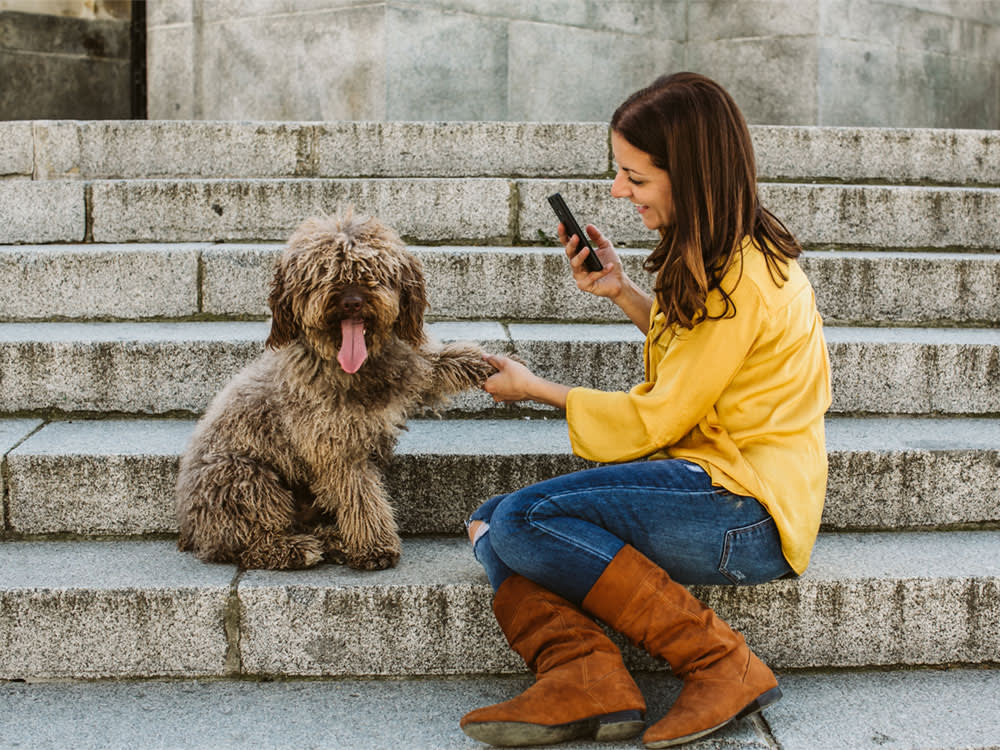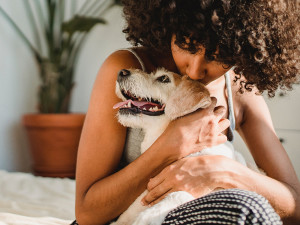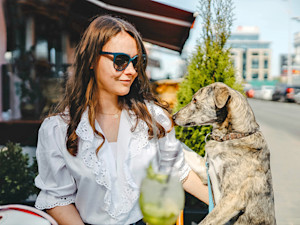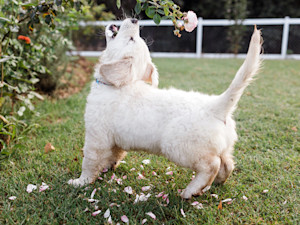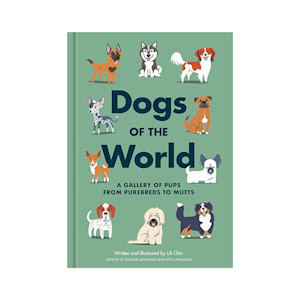How to Train Your Dog to Pose for Photos
For better dog photos, focus on your pup’s natural behaviors.
Who doesn’t love taking photos of their dog? They’re pretty much the cutest thing in every room — and our friends deserve to bask in their glory via our Instagram stories, too.
Getting that perfect shot isn’t always easy, though. It helps to have a patient pup with a good handle on a sit-stay cue, but even then, getting a non-blurry, adorably posed snapshot can still be a challenge. Read on to find out how you can use training techniques to get your pup to pose for photos.
Trick question: All dogs are perfect! But find out which type is the best fit for you.
Train your dog to pose for photos.
The difference between a reasonably cute photo and a must-be-framed-and-hung-on-the-wall shot comes down to two basic issues: technical and behavioral. On the technical side, choose backgrounds and lighting that work in your favor. Learn the ins and outs of your camera to ensure that focus and exposure are flawless. The right perspective can make a huge difference; for example, capturing your dog at roughly their eye level will generally give you a better photo than a shot taken from above.
Behaviorally, understanding how dogs naturally respond to a variety of cues goes a long way toward getting a photograph that does justice to your dog’s handsomeness. Here are a few things to keep in mind when getting your dog to model for pictures.
How much do you spend on your pet per year?
1. Get your dog to look at the camera.
For a dog, a camera is a scary, giant eye. Dogs find staring rude as well as threatening, and a camera looks like the biggest eye ever to them. Because a larger lens used at a distance is less scary to most pups than a smaller lens used close up, a portrait lens is a good investment and will help ensure your pup looks in the right direction. And speaking of eyes, that’s where you literally need to keep your focus. A blurred tail or windblown fur can convey the essence of your dog by capturing their energy, but their eyes must be sharp, or the photo will look off.
2. Go for the head-tilt.
When you imagine the perfect dog photo, you probably envision a dog who’s cocking their head. There’s just something adorable about a puppy head tilt. Luckily, there are simple ways to get your pup into position. Noises are key. The easiest way to get your dog to tilt their head is to make an unfamiliar (and nonthreatening) sound. Why? Because of their extremely sensitive hearing, dogs often change the position of their ears to optimize their sound perception.
Smooching, tongue clicks, saying “woop, woop,” or even singing or imitating a bird may cause your dog to look at you inquisitively — and voilà, there’s the cute head tilt. If that doesn’t work, try a squeaky toy. Some dogs will hold the tilt for a while, but others so only for a moment, so keep your finger on that shutter button, and be ready to take the shot as soon as they move their head.
3. Use training to help direct your dog’s attention and positioning.
For most dogs, training is best described as a work in progress, but there’s no need to despair. In terms of photographs, the goal is mainly to keep your dog in a pose and get their attention. Even if your dog doesn’t consistently follow cues, there are ways to naturally achieve them for a photo.
Use motion to your advantage: Many dogs are riveted by motion, so wiggling a finger, waving an arm or shaking a toy will often keep a dog occupied, posed and looking in the right direction long enough to take the shot.
Your body language can help: Dogs who don’t have a solid “stay” can be encouraged to remain in place with a slight lean-forward by the photographer. Additionally, if you ask your dog to sit and then put some distance between you to get in position, back away instead of turning your back. Dogs have a tendency to follow when you turn away from them — a great thing in general, but not during a photo session.
Make it a positive experience: You don't want your pup to hate getting their picture taken, so keep the session short and incorporate plenty of joyful elements — that means lots of treats and play. Do they love to fetch?opens in new tab Use their favorite ball or incorporate it into your photo. Are they drawn to a particular toy? Use it.
4. Embrace the bloopers.
No matter how hard we try to take that elusive perfect photograph of our dogs, sometimes the best shots are the bloopers — even during awkward moments, say when they're ignoring you and busily chewing one of the many treats. Do they tend to let their tongue hang out, or habitually raise their paw? Catch those moments and you will see not just a beautiful dog, but your beautiful dog. The result could be one of your all-time favorite dog photos.
